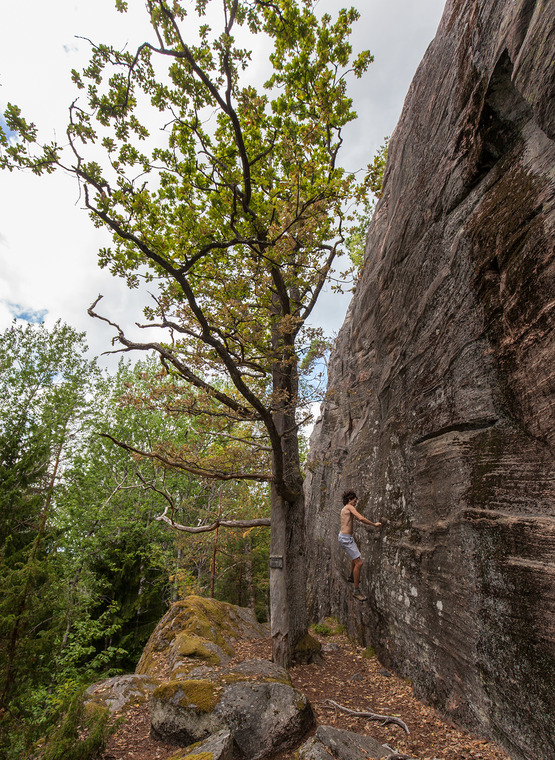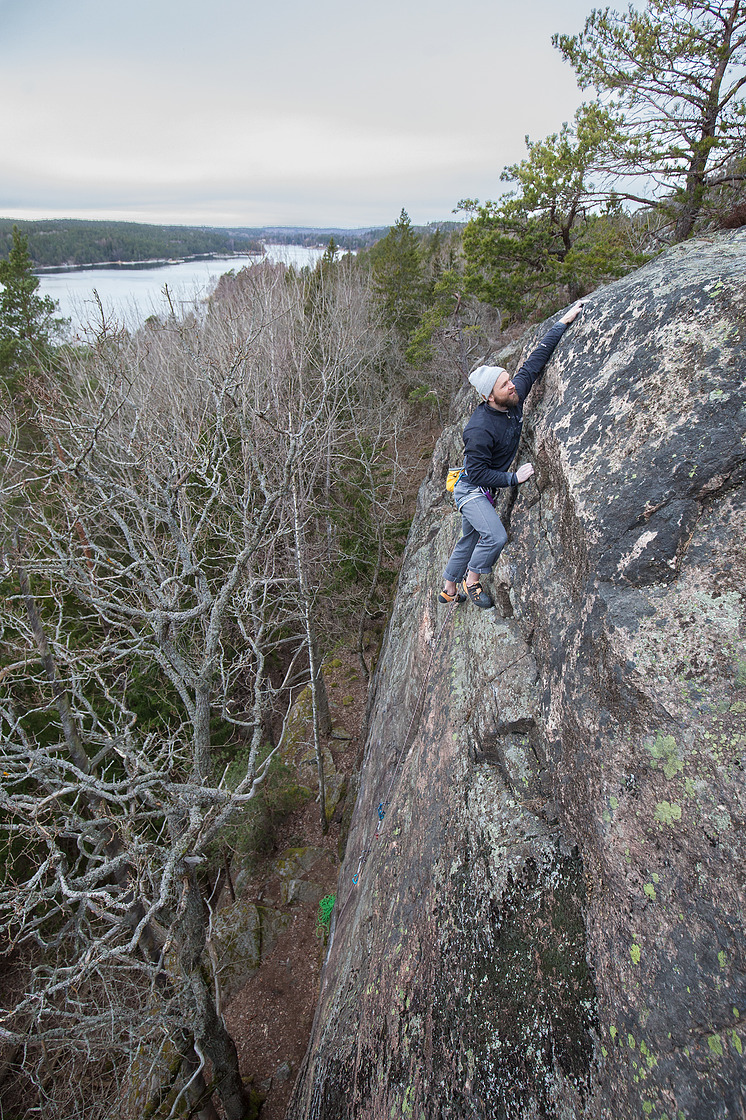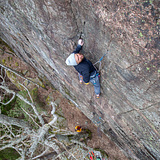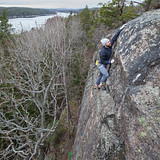Gritstoneberget, which of course is not gritstone at all, is a small but nice wall section on the northern part of Ällmoraberget. The most interesting part of the crag is about 50 m long and about 20 meters high and is lovely located 10 meters above the ground, and the routes start from a two meter wide ledge along the wall which you can quite easily “walk” up to. The vast majority of the crag's just over 30 routes start from this ledge. The environment at the crag is very pleasant and it's nice to be located a bit higher up away from bugs and bushes. The view over the bay is also very beautiful, especially in spring and autumn. If you are into traditional climbing this is definitely one of the walls in Stockholm you should visit. A sunny day in early spring is highly recommended.
The rock is quite compact with mainly very thin cracks and a proper assortment of small wires and the ability to place these is necessary to be able to protect satisfactorily (in some cases not at all satisfactory!). The style of the climb is face-climbing on small, good holds and several of the more difficult routes give technical, sparingly protected climbing of high class. The routes on the main wall (Upper wall) are for the most part quite clean, but there can be some moss here and there on the routes, so it's a good idea to bring a brush.
To the right of the main wall (Upper wall), the face continues to the right with a lower wall that has a few routes of less interest. Below on the lower wall, there are also a couple of routes, unfortunately they are heavily overgrown. Another sector (Ällmoraväggen) is located 100 meters south of the upper wall, along the road. Routes here are a bit steeper and not so much moss on the routes except for the start of a couple of routes, but more bushy down here.
A few bolts and pitons are found here and there on the crag. Remember that these are mounted the same year as the first ascent, the condition is probably not the best. Back up if possible. The cliff is not suitable for small children because you are on a ledge 15 meters above the ground.
Environment:
Southwest. A few single trees in front of the wall (Upper wall) but mostly open to the sun.











